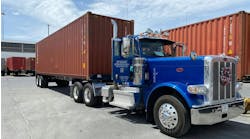Contrary to the overall decline in crashes and fatalities, crashes in construction zones are increasing at a dramatic rate. According to FMCSA's “Work Zone Crash Facts” report, the number of people killed in work zone crashes increased 57% between 1997 and 2000. Large trucks are involved in 25% of these fatalities.
It's time for trucking to lead a campaign to reverse these alarming statistics. Previous efforts have clearly fallen far short of the mark.
Here are some of the findings:
-
8% of all work zone truck crash fatalities occur during daylight hours;
-
87% occur during weekdays;
-
Crashes are fairly evenly distributed among the three work seasons — spring, summer and fall;
-
11% of all fatal work zone crashes take place on urban Interstates, even though these roads account for only 6% of all fatal crashes;
-
82% of fatal work zone crashes involving large trucks result from rear-end, head-on or angle collisions. (Our internal claim data confirms that these incidents often involve rear-end and lane-change/merge collisions; and while they account for about 30 % of all claims, they are responsible for nearly 45% of our total claim expense.)
How can we use this information to change the dangerous trend? First and foremost, we must come to grips with traffic congestion. Congestion data for ten major urban areas, published by the Texas Transportation Institute and Cambridge Systematics, paints a rather dramatic picture of highway congestion.
Morning and evening peak periods, for example, routinely add a 25% to 50% “misery factor” (i.e., additional time needed to reach your destination) to travel during non-peak hours. The worst delays occur in the afternoon and on Thursdays and Fridays. In addition, the congestion that occurs during off-peak periods results in the most precipitous drop in average highway speeds.
If we look at these findings in the context of highway work zones, it becomes obvious where we need to focus our efforts. It turns out that work zones create the same “precipitous speed drop” conditions that typically occur during off-peak congestion periods.
Second, driving through work zone projects, which typically takes place in the afternoon and on Thursdays and Fridays, requires the utmost vigilance. But these are the very times drivers are more likely to be distracted, rushed or vulnerable to biological lows in alertness levels. We need to develop a driver awareness campaign that will bring these facts to the attention of our driver teams.
Next we have to look at the issue of enforcement. Granted, many states post double or triple penalties for work zone violations. Realistically, however, few “sane” enforcement officers would conduct an all-out roadside blitz in or adjacent to these dangerous work zone projects. Fleets need to take the lead by instituting aggressive company policies; for example, a driver's first work zone violation mandates immediate suspension. This would help get the message across that the company has a zero-tolerance approach to work zone traffic violations.
Then there's the issue of awareness. It's not enough for work zone safety to end up on the agenda of our spring and summer safety meetings. Given the size of the problem, we need to do more.
We should develop ongoing internal and external communication campaigns, much like ATA's speed intolerance campaign. At the fleet level, Thursday/Friday tailgate talks could help raise driver awareness of these issues. In addition, carries could deliver information about ongoing work zone locations to drivers via check-call broadcasts or in-cab messaging systems.
It's time to take a look at your fleet's approach to work zone safety. Highway re-construction in this country is a fact of life. And by definition, work zones mean sudden decreases in highway speed — the very condition most likely to lead to rear-end collisions. A driver's only defense is to be alert, and we've got to help them get there.
Jim York is the manager of Zurich North America's Risk Engineering Team, based in Schaumburg, IL.


